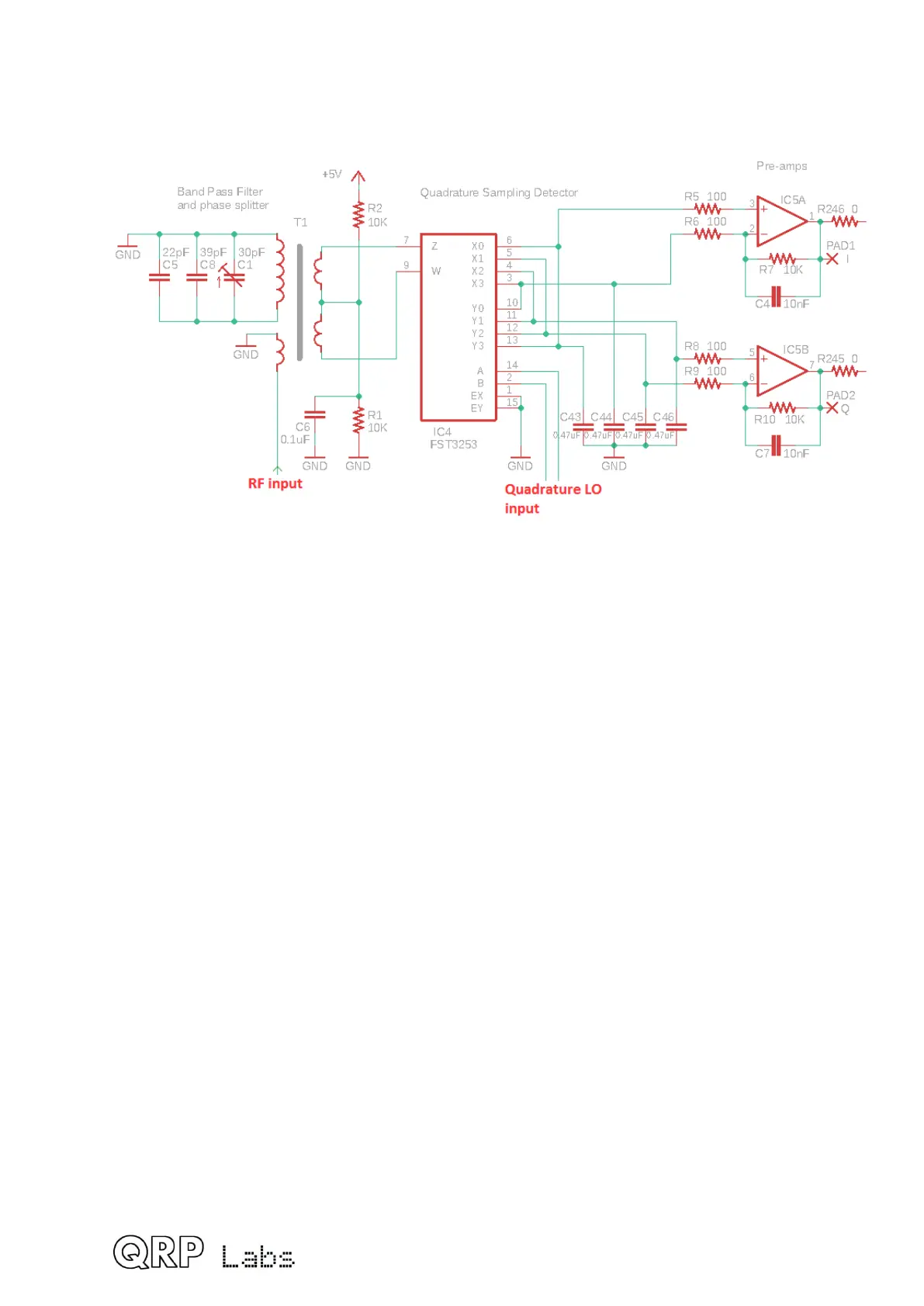The Clk2 signal from the Si5351A is used as the transmit oscillator as previously
mentioned. It would have been easy to enable/disable the Clk2 output in software in the
Si5351A chip configuration. However, this transceiver design also includes the built-in
signal generator feature, for aligning the Band Pass Filter and adjusting the I-Q balance and
phase adjustment controls. So, some of the spare gates in the 74ACT00 are used to switch
the signal generator on/off and the RF Power Amplifier (PA) signal on/off, separately.
When the SIG OUT control line from the microcontroller is high, the Clk2 signal is enabled
as signal generator, and routed via a 120K resistor straight to the RF input of the
transceiver.
A TX signal is produced using IC3D as a plain inverter, to invert the logic level “RX” output
from the microcontroller and produce a “TX” signal. This TX signal is used elsewhere in the
circuit also (audio muting during TX). R36 pulls the RX signal high during the part of a
second at power-up that the microcontroller is booting up and has not yet enabled or
switched the RX signal high.
When the TX signal is high, the Clk2 signal is routed to the PA. The final inverting gate
IC3A is added to make sure that when the TX gate IC3B is off, the driver voltage presented
to the BS170 gate is low, so the transistors are off.
4.10 Class-E Power Amplifier
A Class-E power amplifier is a
wonderful thing. It has a very high
efficiency, sometimes over 90%.
This has several important
benefits:
a) Since not much power is
dissipated, we can use
smaller (and cheaper)
transistors
b) So little power is wasted as
heat that the requirement
for a heatsink is reduced or
eliminated
c) During transmit the radio
requires less current, so
the drain on a battery is
less – important for people
who want to operate portable.
A Class-E Power Amplifier contains a resonant circuit at the frequency of operation, so it is
only suitable for single-band use. A lot has been written about Class-E, much of it is very
technical and mathematical.
Some excellent background reading are two papers by Paul Harden NA5N:
http://www.aoc.nrao.edu/~pharden/hobby/_ClassDEF1.pdf and
http://www.aoc.nrao.edu/~pharden/hobby/_ClassDEF2.pdf
Paul NA5N describes two defining features of Class-E:
88
